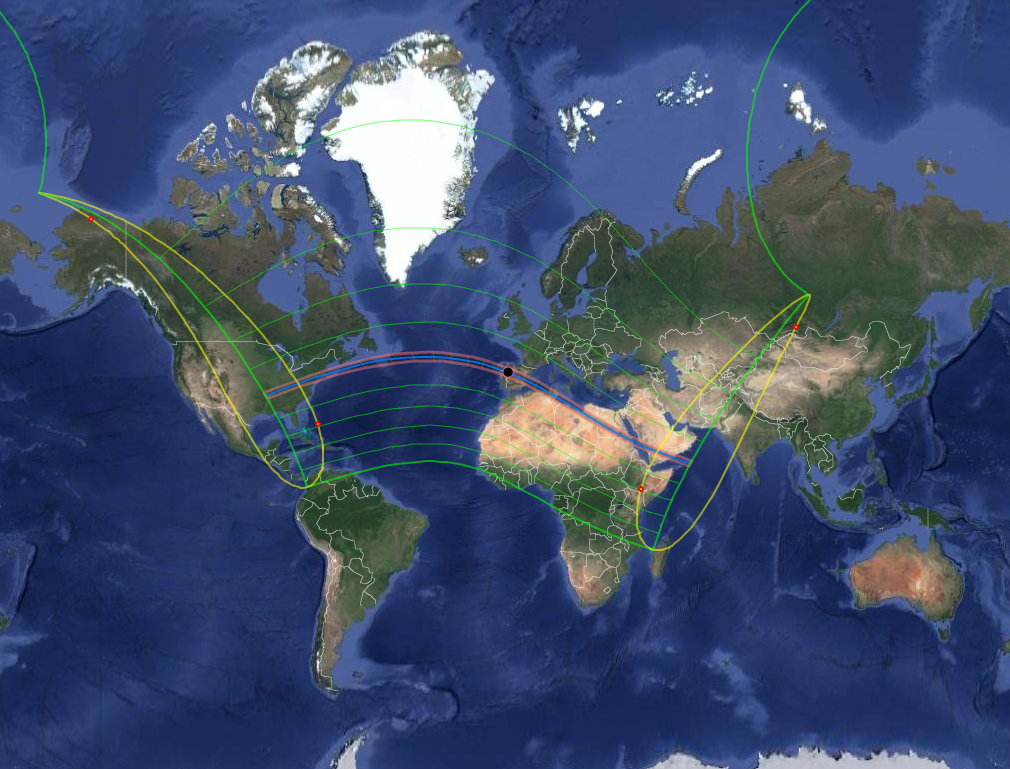The solar eclipse of 1478

Visibility of the solar eclipse happened on July 29th, 1478. Yellow ovals determine the areas in which part of the eclipse took place below the horizon. The blue curve path “flies” over locations from where maximum occultation of the solar apparent surface could be observed (source: Xavier Jubier).
[…] They got into a fortress called the Ansita, which is in the parts of Tirajana. As the Governor knew it, he left with all the people on horseback and on foot that he could take, and went to the said fortress and surrounded it; and he had it surrounded in such a way they came to an agreement to save their lives and keep them from captivity and go to Castile, which were agreed. And the next day the faycán and the other Canarians came out of the fort, and brought them, and became Christians, on which day the Sun made a great eclipse, and afterwards it rained and a great wind blew; and over that island flew many birds that they had never seen before, which were cranes and storks and swallows, and many other birds they do not know their names.[1]MORALES (1978), p. 508. Translated and adapted from old Castilian by PROYECTO TARHA.
This curious passage, at the end of Chapter XXXVII in the Chronicle of the Catholic Monarchs written by Diego de Valera, shortly narrates the end of the conquest of Gran Canaria associating it with an astronomical phenomenon of undoubted transcendence for most of the ancient cultures: a total eclipse of the Sun.
